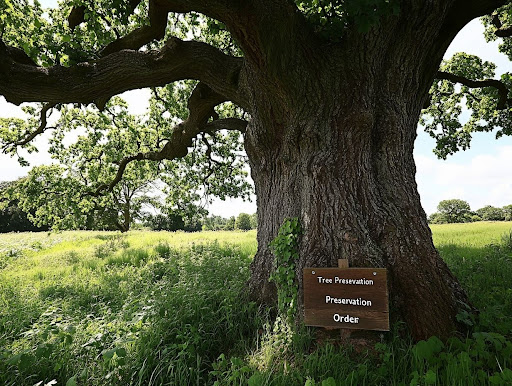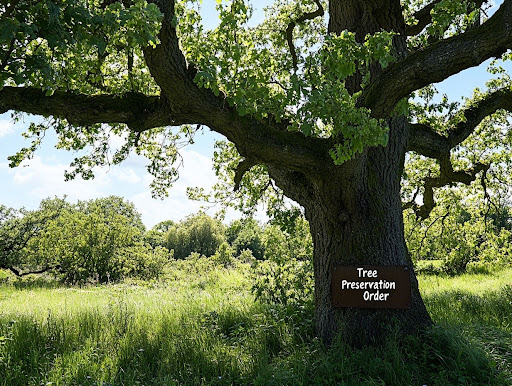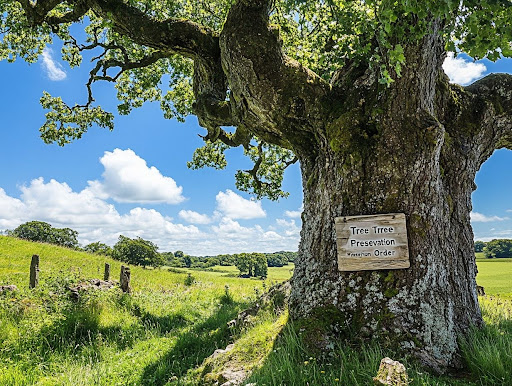Tree Preservation Orders: What You Need to Know
Tree Preservation Orders (TPOs) are essential for protecting communities’ natural beauty and ecological balance, particularly in regions such as the Central Coast, NSW. This guide outlines the fundamental aspects of TPOs, including their significance, enforcement mechanisms, and methods for determining whether your property is subject to these orders. Additionally, it discusses the restrictions and benefits associated with TPOs, the procedures for applying for tree removal, tree planting as alternatives, and considering arborists’ assistance. A comprehensive understanding of TPOs will enable individuals to make informed decisions regarding the trees that contribute to enhancing their environment.
Key Takeaways:
- Tree Preservation Orders (TPOs) are regulations that protect trees in Central Coast, NSW, Australia, enhancing the local environment through tree management.
- TPOs are essential for preserving the natural environment, maintaining the area’s beauty, and supporting cultural heritage.
- Homeowners are responsible for following TPOs and can face non-compliance fines.
- It is essential to check if your property is affected by a TPO and to follow the permit application process for tree removal.
What Are Tree Preservation Orders (TPOs)?
Tree Preservation Orders (TPOs) are legal instruments established by local councils to safeguard specific trees recognised for their ecological value, cultural significance, or contribution to the urban environment. These regulations are designed to prevent the indiscriminate removal or damage of protected trees, promoting biodiversity and providing essential habitats for wildlife.
TPOs also contribute to community benefits by preserving tree cover. Tree cover enhances the visual aesthetics of neighbourhoods and supports environmental health through functions such as carbon dioxide absorption and shade provision.

Why Are TPOs Important?
Tree Preservation Orders (TPOs) safeguard local ecosystems’ environmental health and cultural significance by preserving biodiversity and offering community benefits.
These regulations protect significant trees that contribute to shade provision, carbon sequestration, and aesthetic enhancement in urban areas, thereby preventing their removal and neglect.
TPOs promote responsible development and support tree conservation efforts to maintain a balanced urban environment where nature can coexist harmoniously with human activity.
What Is the Purpose of TPOs?
Tree Preservation Orders (TPOs) legally protect trees deemed significant in urban environments, ensuring their conservation and protection against removal or damage.
These regulations are intended to preserve individual trees and safeguard entire ecosystems from the challenges posed by urban development. By implementing TPOs, communities aim to mitigate risks associated with deforestation, such as the loss of biodiversity and adverse effects of climate change. TPOs play a crucial role in addressing urban imbalances, ensuring adequate green spaces are maintained in the face of expanding infrastructure.
- Community awareness is essential, empowering individuals to recognise the value in urban landscapes.
- Participation in enforcing TPOs promotes a culture of sustainability and shared responsibility.
- Through educational initiatives, communities can actively engage in the preservation of their natural surroundings.
Involving residents in discussions surrounding TPOs enhances compliance with regulations and fosters a deeper appreciation for trees’ vital role in improving livability and environmental resilience.
What Are the Benefits of TPOs?
Tree Preservation Orders (TPOs) provide numerous benefits, including enhanced environmental health, improved biodiversity, and increased community advantages through conserving significant trees and protecting ecological value. By preventing the removal of trees and promoting proper tree management, TPOs play a crucial role in preserving essential ecosystems that offer shade, support local wildlife, and contribute to the overall ecological value of urban landscapes.
The presence of healthy trees significantly enhances air quality by absorbing pollutants and releasing oxygen, thereby improving the urban living experience. Additionally, trees combat the urban heat island effect by providing cooling shade, which contributes to reduced energy costs and promotes energy efficiency, acting as natural carbon sinks.
These factors directly impact community satisfaction, as neighbourhoods with well-maintained green spaces often enjoy higher property values. The benefits include:
- Enhanced property values that foster a sense of pride among residents.
- Improved biodiversity which supports sustainable habitats for various species.
- Increased green areas encourage community engagement and outdoor activities.
In conclusion, integrating TPOs into urban planning benefits individuals and enriches the community by fostering a vibrant, green environment.
Who Is Responsible for Enforcing TPOs?
The enforcement of Tree Preservation Orders (TPOs) is primarily the responsibility of local authorities. These authorities monitor compliance with legal regulations and ensure the protection of significant trees within their jurisdiction.
This responsibility encompasses conducting regular assessments of tree health and condition and investigating reports of potential breaches. Local authorities can impose fines for non-compliance, which serves as a deterrent against unauthorised tree removal or damage.
Community feedback is essential in the enforcement process; residents are encouraged to report concerns and discuss tree safety, risk, and preservation strategies. A collaborative approach enhances transparency and fosters a shared sense of responsibility for urban forestry.
- Regular assessments of tree health.
- Investigation of potential breaches.
- Power to impose fines.
- Importance of community feedback.
- Collaborative approach for urban forestry.

How Do I Know If My Property Is Affected by a TPO?
To ascertain whether your property is subject to Tree Preservation Orders (TPOs), it is advisable to consult local councils. These councils can provide thorough tree assessments and offer consultation advice concerning protected trees in your area.
Each council maintains a register of TPOs, which informs property owners of any restrictions or requirements relating to tree work on their properties.
Where Can I Find Information about TPOs in Central Coast, NSW?
Local council websites offer information regarding Tree Preservation Orders (TPOs) in Central Coast, NSW. These websites offer comprehensive resources and documentation regarding tree preservation practices and regulations. Each council, including the Central Coast Council, maintains an updated database of TPOs designed to assist residents in understanding their rights and responsibilities related to tree management.
Navigating these websites is generally straightforward. Residents can typically find TPO-related information by following these steps:
- Visit the official website of the local council.
- Locate sections titled ‘Environment,’ ‘Planning,’ or ‘Trees’ within the main menu.
- Utilise the search function by entering relevant terms such as ‘Tree Preservation Order’.
Councils often provide downloadable PDFs detailing TPO regulations, application processes, and tree care guidelines. Additionally, community education initiatives, such as workshops and online webinars, enhance understanding of tree preservation.
These resources promote awareness and encourage sustainable practices among residents. By utilising this information, individuals can ensure compliance with local laws while contributing to a healthier environment.
For more specific guidance on TPOs, consulting the Central Coast Council or attending local council meetings may provide valuable insights.
How Can I Check If My Property Has a TPO?
To determine whether your property is subject to a Tree Preservation Order (TPO), it is advisable to contact your local council directly or access their online database. This database typically lists all properties affected by TPOs and the specific regulations governing them. This proactive measure is essential for homeowners contemplating tree-related work or permit applications.
Understanding the implications of Tree Preservation Orders and tree orders is crucial before modifying your landscaping. If a TPO is in effect, it may impose restrictions on your actions regarding the trees on your property, including pruning, trimming, or even removal. Therefore, consulting with your local council is recommended, as they can provide you with the specific regulations pertinent to your situation.
This approach ensures that you are fully aware of any potential penalties for non-compliance. To facilitate this process, consider the following steps:
- Visit the local council’s website: Many councils provide comprehensive online guides regarding TPOs.
- Request a site visit: A council representative may occasionally assess your property and offer relevant guidance.
- Document your intentions: Maintaining records of any enquiries or permits can prove beneficial in the future.
By taking these measures, you will protect your property and contribute to preserving local biodiversity.
What Are the Restrictions of TPOs?
Tree Preservation Orders (TPOs) impose specific restrictions on property owners regarding the management of protected trees. These regulations prohibit unauthorised actions such as tree removal, tree pruning, or any activities that could harm the health of these trees, which serve as habitat for animals.
Such legal measures are implemented to uphold ecological balance and biodiversity within urban environments, ensuring the preservation of significant trees.

What Can I Do with Trees That Are Protected by TPOs?
Property owners with trees protected by Tree Preservation Orders (TPOs) may engage in specific activities, such as tree maintenance and pruning, provided they obtain the necessary permissions and adhere to the guidelines established by local councils. Responsible tree management practices not only preserve the ecological value of these trees but also contribute to the overall health of the urban environment, enhancing their visual appeal and environmental benefits.
Property owners must follow a structured process when considering any work on protected trees to ensure compliance with council regulations and avoid potential penalties. This process includes:
- Consulting with qualified arborists who can provide expert advice on the health and maintenance of the trees.
- Contacting the local council to ascertain specific restrictions related to TPOs and to secure any necessary permits.
- Submit a formal application that details the proposed activities, ensuring alignment with the criteria established by the council.
Emphasising the importance of responsible tree management is crucial for maintaining a vibrant and sustainable urban landscape, thereby facilitating the coexistence of development and nature.
What Are the Consequences of Violating TPOs?
Violating Tree Preservation Orders (TPOs) can lead to substantial consequences, including significant fines for non-compliance and potential legal action by local councils. Such violations endanger protected trees and undermine community efforts to uphold biodiversity and environmental health within urban areas.
It is imperative for all stakeholders, particularly property owners and developers, to understand the specific penalties associated with TPO violations. For example, fines may reach up to £20,000 for deliberately destroying protected trees, with additional charges imposed for restoration efforts. In severe instances, offenders may even face imprisonment. A notable case in 2020 involved a developer charged with illegally removing several ancient oak trees, resulting in financial penalties and a mandatory replanting order. This highlights the critical importance of compliance.
- Penalties can escalate based on the extent of damage inflicted.
- Community feedback is essential in enforcing TPO regulations, enabling timely reporting of violations.
- Awareness campaigns are crucial in informing the public about TPOs and their significance in urban planning.
Promoting awareness and adherence to these regulations can significantly contribute to preserving urban forests and enhancing a healthy community ecosystem.
How Can I Apply for a Tree Removal Under a TPO?
Property owners seeking to remove trees subject to Tree Preservation Orders (TPOs) must submit a permit application to their local council. This application should include a comprehensive explanation of the reasons for the proposed removal and any supporting documentation necessary for the assessment.
This process ensures that all tree-related activities are carried out responsibly and in compliance with local regulations.
What Is the Process of Applying for a Tree Removal Under a TPO?
Applying for tree removal under Tree Preservation Orders (TPOs) generally entails submitting a comprehensive permit application to the appropriate local council, such as Dubbo Regional Council, Innerwest Council, or Auburn City Council. This council will evaluate the request based on various criteria, including the tree’s health, significance, and specific reasons for removal.
Gathering extensive information well in advance is essential to facilitating a smooth navigation of this process. It is advisable to consult with a professional arborist to assess the tree’s condition and determine whether removal is warranted. This consultation can significantly influence the outcome of the application and may take anywhere from a few days to a couple of weeks, depending on the arborist’s availability.
Following this assessment, the applicant should prepare the submission by documenting pertinent details about the tree, such as its location and species, while clearly outlining the reasons for its removal. Adhering to the specific guidelines set forth by the local council, such as Blacktown City Council, Botany Bay Council, or Camden Council, is imperative, as non-compliance can result in delays or jeopardise the approval process. The significance of these guidelines cannot be overstated, as they are established to protect local ecology and community interests.
To summarise the essential steps:
- Consult with arborists for a professional evaluation.
- Document the tree’s condition, location, and species.
- Apply along with any necessary permits.
- Await the council’s decision, which may take several weeks.
Thorough preparation and a clear understanding of the procedure can significantly ease obtaining a tree removal permit under a TPO.

What Documents Do I Need to Prepare for the Application?
Compiling specific documentation supporting the application is essential when preparing to apply for tree removal under Tree Preservation Orders (TPOs). This documentation should include an assessment report from a qualified arborist, photographs of the tree in question, and a detailed justification for the removal.
The thoroughness of the submission can significantly influence the success of the request. Providing clear and accurate information throughout the application process mitigates potential delays and complications.
Below is a list of necessary documents that will aid in substantiating the case:
- Official application form
- Site plan indicating the tree’s location
- Evidence of ownership or consent from the property owner
- Environmental impact assessment, if applicable
Before finalising the application, consulting with a professional arborist is highly advisable. Their expertise can ensure that the assessment and rationale are sound and conform to industry standards, thereby enhancing the credibility of the request.
What Are the Alternatives to Tree Removal Under a TPO?
Exploring alternatives to tree removal under Tree Preservation Orders (TPOs) is crucial for property owners who aim to manage protected trees responsibly. Options such as tree pruning, maintenance, and participation in replanting schemes can effectively address safety concerns while preserving the ecological value of significant trees.
This multifaceted approach not only supports the sustainability of the urban landscape but also fosters a greater appreciation for the natural environment, contributing to the preservation of wildlife habitats and native wildlife. Property owners may consider tree pruning a proactive measure to enhance tree health and aesthetics, reducing the risks associated with fallen branches or structural damage. Regular inspections and routine care can aid in the early identification of potential hazards, promoting safety without resorting to drastic measures.
Engaging in community initiatives for replanting schemes cultivates a collaborative spirit among residents, contributing positively to local biodiversity and attracting wildlife. Furthermore, participation in educational programmes focused on tree management can enhance awareness and responsibility concerning urban forestry, ensuring that trees continue to play a vital role in the ecosystem.
How Can I Get Help with TPOs?
Individuals seeking assistance with Tree Preservation Orders (TPOs) are encouraged to contact their local councils, such as the Dubbo Regional Council, Innerwest Council, and Auburn City Council, which provide resources and consultation services regarding compliance and tree management. Engaging with professional arborists can offer critical expertise in understanding TPO regulations, tree protection, and responsible tree care.
By utilising these resources, individuals can effectively navigate the complexities of tree preservation laws, thereby becoming fully informed of their rights and responsibilities. Local councils frequently organise community workshops and informational sessions, where knowledge about the importance and benefits is disseminated. These platforms enable residents to gain insights into the importance of maintaining tree health and biodiversity within their communities, promoting community participation.
- Participating in such discussions enhances individual understanding and allows individuals to express their concerns or support regarding specific trees, such as tree height and diameter at breast height, and areas.
- This community feedback is instrumental in shaping TPO enforcement efforts, tree legislation, and prioritising restoration projects.
When the public actively engages with these initiatives, the resulting collaborative environment can enhance conservation outcomes and a deeper appreciation for urban forestry, supported by councils like Blacktown City Council, Botany Bay Council, Camden Council, Campbelltown City Council, and Canterbury City Council.
Frequently Asked Questions
A Tree Preservation Order (TPO) is a legal document issued by the local council to protect trees or woodlands that have significant community value. TPOS are essential because they restrict the cutting, lopping, and destruction of trees without permission from the council.
You can contact your local council, such as the Innerwest Council or Auburn City Council, or visit their website to find out if a TPO covers a particular tree. You can also seek advice from a professional arborist who can assist you in identifying and understanding the restrictions of a TPO.
Yes, you must obtain permission from the local council before working on a tree covered by a TPO. This includes any tree pruning, lopping, or removal. Failure to obtain permission can result in fines and legal action.
The local council will consider various factors, such as the tree’s health and condition, its contribution to the local environment, and the proposed work’s impact on its stability and safety. They will also consider any potential alternatives or mitigating measures.
Yes, you can appeal a decision made by the local council regarding a TPO. You can submit an appeal to the Land and Environment Court within 28 days of the council’s decision. It is recommended that professional advice and assistance be sought when appealing a TPO decision.
Yes, there are exemptions to TPOs, such as emergency works to ensure public safety or where the tree poses a risk to property. However, the local council must approve these exemptions before any work can be carried out on the tree.
